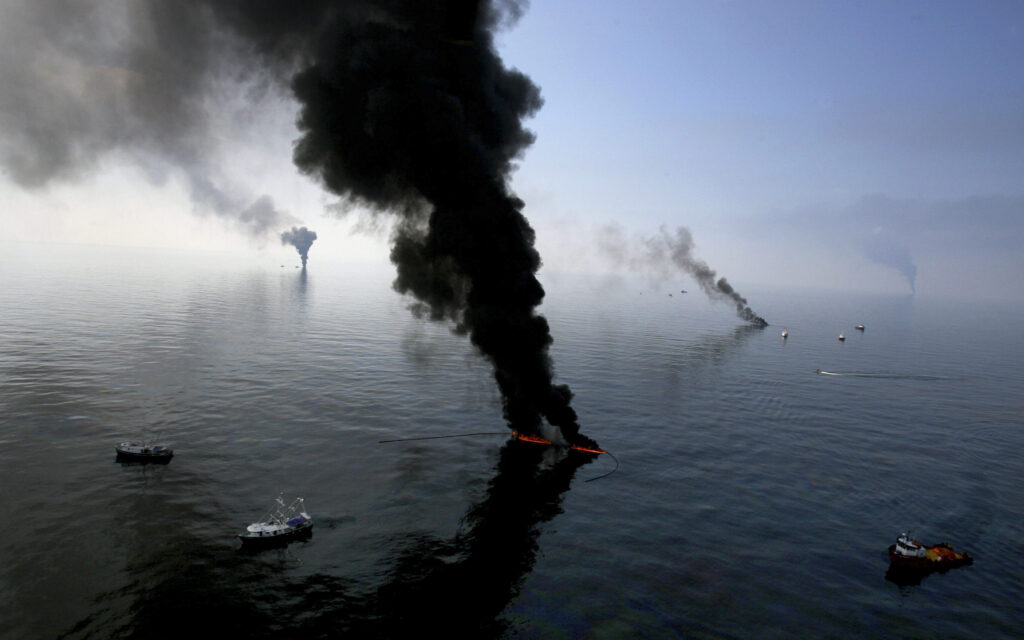
Extractive industries in Colombia, primarily oil, coal and gold mining, are heavily impacting the strife-torn country’s environment. While oil spills and other forms of environmental contamination are frequent, there is very little coverage of those incidents. A worrying trend to emerge in recent years is the Colombian government’s failure to report oil spills and monitor whether they are fully remediated. With a considerable portion of oil operations located in Colombia’s Amazon, the industry poses a significant risk to the world’s most important ecosystem. According to the Environmental Justice Atlas, Colombia has the third highest number of environmental conflicts in Latin America, while those who organize the protection of natural resources are suffering from excessive violence. That can be blamed on Bogota aggressively developing Colombia’s oil resources to accelerate economic development and boost fiscal income regardless of the social and environmental impact.
Petroleum industry think-tank Crudo Transparente found 54 oil spills in Colombia between 2017 and 2021, with 17 environmental incidents, including spills, during 2022. The think-tank found that most of those spills were due to leaks and other maintenance issues relating to the operation of oil wells, pipelines and other infrastructure. Crudo Transparente found one of the worst spills during that period occurred in March 2018 at national oil company Ecopetrol’s Lizama 158 well in the La Fortuna municipality near the city of Barrancabermeja, home to Colombia’s largest oil refinery. It is believed at least 550 barrels spewed into the local environment including waterways feeding into the Sogamoso River impacting wildlife and nearby fishing communities. Effects of the spill, according to local communities, were still being felt during 2021 because of an inadequate cleanup with petroleum lingering in river sediment. The spill saw Ecopetrol fined around $840,000 by Colombia’s National Environmental Licensing Authority (ANLA – Spanish initials). The Putumayo Department, a significant portion of which lies in the Amazon Basin, has long been a hot spot for oil spills with them regularly impacting waterways and local indigenous communities.
While oil companies are to blame for a significant portion of the spills occurring in Colombia, they are also the result of attacks on industry infrastructure by leftist guerillas, petroleum theft and the operation of illicit jungle refineries. A June 2020 report (Spanish) by Colombian think tanks Ideas for Peace Foundation (FIP – Spanish initials) and Consultancy for Human Rights and Displacement (CODHES -Spanish initials) counts 3,659 attacks on industry infrastructure between 1 May 1986 and 24 November 2016. Leftist guerillas perpetrated these incidents, the now defunct Revolutionary Armed Forces of Colombia (FARC – Spanish initials) and the National Liberation Army (ELN – Spanish initials). The report also points out that nearly four-fifths of those incidents were concentrated in the departments of Putumayo, Arauca, Norte de Santander, Nariño and Santander, all of which have long-been been flashpoints for Colombia’s civil conflict.
Colombia’s pipeline infrastructure has long been a popular target for the FARC and ELN for decades, with both illegal armed groups viewing the hydrocarbon sector seen as a legitimate target in their struggle against the state. The 220,000 barrel per day Caño Limon Coveñas pipeline, which connects the Caño Limon oilfield in the Department of Arauca to the Caribbean coast, has suffered nearly 2,000 attacks since operations commenced in 1986. Those have been responsible for frequent oil spills and other environmentally damaging incidents. During 2022, Crudo Transparente counted 13 attacks on Colombia’s oil industry infrastructure, with the Caño Limon Coveñas and Transandino pipelines and the La Cira Infantas and Casabe oil fields being the primary targets.
